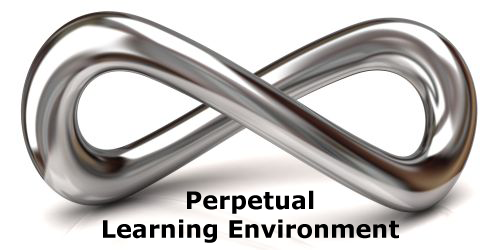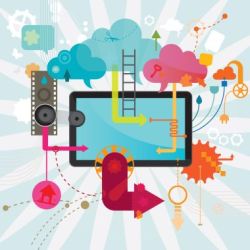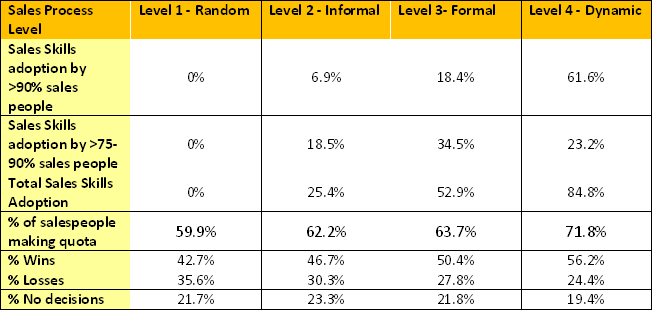
My one wish for sales teams is that they are given the opportunity to continue to learn and develop in a dynamic learning environment where learning, reflection and constant iterations in their behaviour and skills are a regular, daily way of life. Those businesses create, what we call at Barrett, a Perpetual Learning Environment (PLE) where learning is integrated into everything we do and is a daily way of life not just a training event held once a year.
Sounds idyllic, fanciful even, well there is a body of work emerging that shows there are significant financial and other business benefits to sales teams if we implement such a PLE plan.
An excellent research paper published by The Sales Readiness Group in the Harvard Business Review, 2012 highlighted some very interesting findings about which type of learning environment produces the best sales results.
Sales Performance was measured based on the Sales Process Level. There are 4 sales process levels highlighted in the findings:
- Level 1 – Random: Everyone does their own thing their own way. Company may be perceived as anti-process.
- Level 2 – Informal: Everyone exposed to sales training and company indicates that people should use these skills, but no one monitors, measures or follows up
- Level 3 – Formal: Everyone exposed to sales training, and company regularly reinforces the used of defined sales skills (sometimes too dogmatic in application). They conduct periodic formal reviews on effectiveness and then make changes based on analysis.
- Level 4 – Dynamic: Everyone exposed to sales training, then company dynamically monitors and provides continuous feedback on the salesperson’s application of prescribed sales skills, processes, etc. They also proactively modify the process when changes are detected in the market place
Taking these 4 sales process levels the research revealed amongst other things, the level of skills adoption, people making quotas and win:loss ratios. Here is what they found:
With the constant and rapid changes in markets, products and services, client connectivity, the overabundance of choice, and shifts in the meaning of true value, sales teams need to keep up and on top of what is happening in their world. To support them they need a sales culture and structure that thrives on continuous learning supporting salespeople to learn, absorb, and apply their skills and knowledge in dynamic, shifting markets.
Even with all this information and other similar studies, unfortunately most sales teams still operate at Level 1 or Level 2 in terms of their sales development. If you want to make more and better sales, it’s time for change.
The first steps to creating a Perpetual Learning Environment (PLE)
Learning doesn’t need to be in classrooms or via sales meetings. Learning can happen anywhere anytime. First we need to welcome and encourage open and enquiring minds. Always asking How? What, What if? Why? etc. Not accepting the status quo and making sure that we have a worldly view that encompasses things outside of our neck of the woods. This is how we can become aware of changes and how to adapt. And with the advent of technology learning can happen anywhere any time. We need to make continuous learning a priority, make it accessible, and make it normal.
So what are the underlying principles of a Perpetual Learning Environment (PLE) and dynamic learning?
When it comes to getting a sales team on the right track we need to make sure there is strong leadership and systems in place underpinned by a clear strategy and goals that guide the right behaviours and mindsets. A PLE should be built upon how individuals internalise, own and apply what they learn based on how they acquire the knowledge.
Delivering an effective training, coaching and mentoring program is more than a 1-2 day event on sales theory and skill. To achieve Level 4 standards in a PLE, we need to emphasise and encourage the integration of both formal and informal learning elements across each week, month, and year.
The most effective way to learn and develop a skill, behaviour or mindset is to apply and practice it on the job and in real life situations. This is where technology and effective sales coaching can be great assets.
 By combining contextually relevant, practical classroom training (periodically) with regular in-field one-on-one coaching by trained sales managers and access to relevant mentors, supplemented by providing access to online sales education resources such as manuals, videos, podcasts, templates, online sales training, etc. can all be integrated to ensure a focused, blended, learning experience that sustains continuous reinforcement and improvement over time.
By combining contextually relevant, practical classroom training (periodically) with regular in-field one-on-one coaching by trained sales managers and access to relevant mentors, supplemented by providing access to online sales education resources such as manuals, videos, podcasts, templates, online sales training, etc. can all be integrated to ensure a focused, blended, learning experience that sustains continuous reinforcement and improvement over time.
This can be easily set up and accessed by your salespeople where ever they are. The most important point is that a PLE initiative is driven from the top down. Sales leaders and the C-suite need to make this a way of life, ‘how we do business around here’. It needs to be valued and supported or else it will be seen as a token gesture and go nowhere which means we will be back to where most sales teams reside, Level 2 – Informal which is not going to change anything.
Remember everybody lives by selling something.
Author: Sue Barrett, www.barrett.com.au



New Article Email Notification